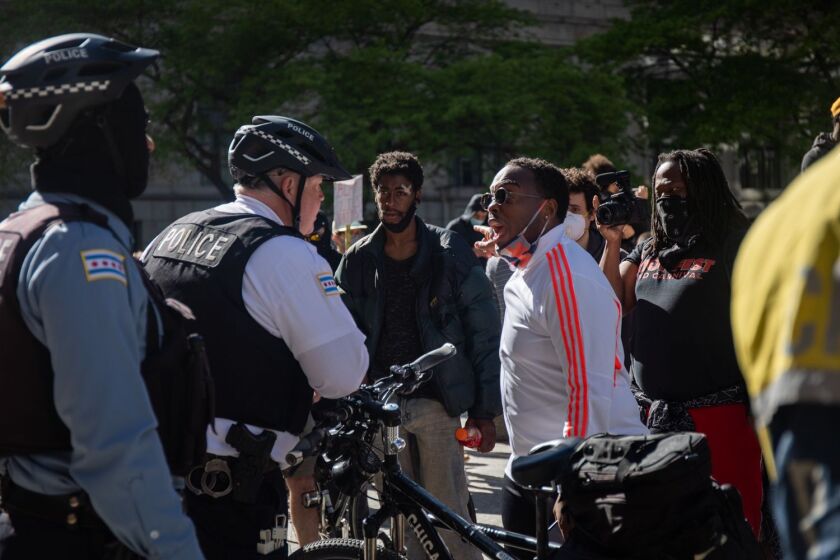Mayor Lori Lightfoot and her top public health official warned that protesters and others who gathered in groups over the weekend may have exposed themselves to COVID-19 and should take precautions to avoid infecting others — but an expert said hundreds or even thousands of people could now be exposed to the virus after the weekend activities.
Lightfoot and Dr. Allison Arwady, commissioner of the Chicago Department of Public Health, said in a news conference Monday that the weekend’s protests over the death of George Floyd that drew thousands to Chicago’s streets may have exposed many to the virus.
Both Lightfoot and Arwady encouraged Chicagoans to isolate at home if they believe they may have been exposed to the virus through group gatherings and asked the same people to avoid contact with high-risk individuals, including the elderly and people with health conditions.
“COVID-19 has not disappeared from Chicago,” Lightfoot said. “We worry about the thousands of people that have been out in the streets over the last few days. Please, in exercising your First Amendment rights or if you are out for any other reason, you have now put yourself at risk and we need you to isolate yourself.”
The warning comes as Chicago was beginning to see the growth of virus cases slow. The mayor said she is concerned about a resurgence.
“God forbid that we see a spike that overwhelms our health care resources just as we saw light at the end of the tunnel,” Lightfoot said. “We need now to be careful and to take precautions.”
Arwady noted that public health officials “were finally, finally seeing major progress against COVID here in Chicago.” However, “while we continue to make progress, I am concerned that this weekend — not just related to the protest but related to a lot of people gathering in Chicago for a lot of reasons — we may see ourselves take a step backwards down the line against COVID in Chicago.”
Arwady reminded residents that a stay-home order is still in effect and that people should maintain a 6-foot distance from each other and wear a mask or other covering over the mouth and nose.
“Nothing has changed unfortunately related to COVID-19,” Arwady said. “We still do not have a treatment, we still do not have a cure, we do not have a vaccine. COVID-19 still takes every opportunity it can to spread, and I’ll remind you that still here in Chicago we are seeing hundreds of new cases of the COVID-19 every day and we’re seeing that particularly in settings where people are unable to keep a 6-foot distance or unable to wear the face coverings that serve some protection for yourself, but importantly, help protect others.”
Infections likely
One expert said the protests potentially exposed hundreds, if not thousands of people, to the coronavirus.
“The threat is real and serious,” said Dr. Robert Murphy, executive director of Northwestern University Feinberg School of Medicine’s Institute for Global Health.
How big a threat is “all a big guess,” Murphy added, saying that the number of new infections could be “hundreds most likely, but then you have to add who they infected, so that number would be thousands.”
Coronavirus travels through the air and infects one person from another through tiny droplets. These droplets can spread even from someone talking.
A factor to consider regarding the protests is that a number of people were yelling. So, if a person at a protest was both carrying the virus and yelling, that would put others nearby at risk, said Tiffany Wiksten, manager of Infection Prevention and Control at Rush University Medical Center.
She noted that the incubation period for the virus can be two to 14 days.
“Time will tell in the next week or so if people become sick,” she said.
Brett Chase’s reporting on the environment and public health is made possible by a grant from The Chicago Community Trust.





